5+ Work Report Examples to Download
A Work Report is a document that summarizes an individual’s or team’s activities, progress, and outcomes over a specific period. It provides an overview of completed tasks, challenges faced, and achievements, helping managers assess productivity and make informed decisions about future projects.
What is Work Report?
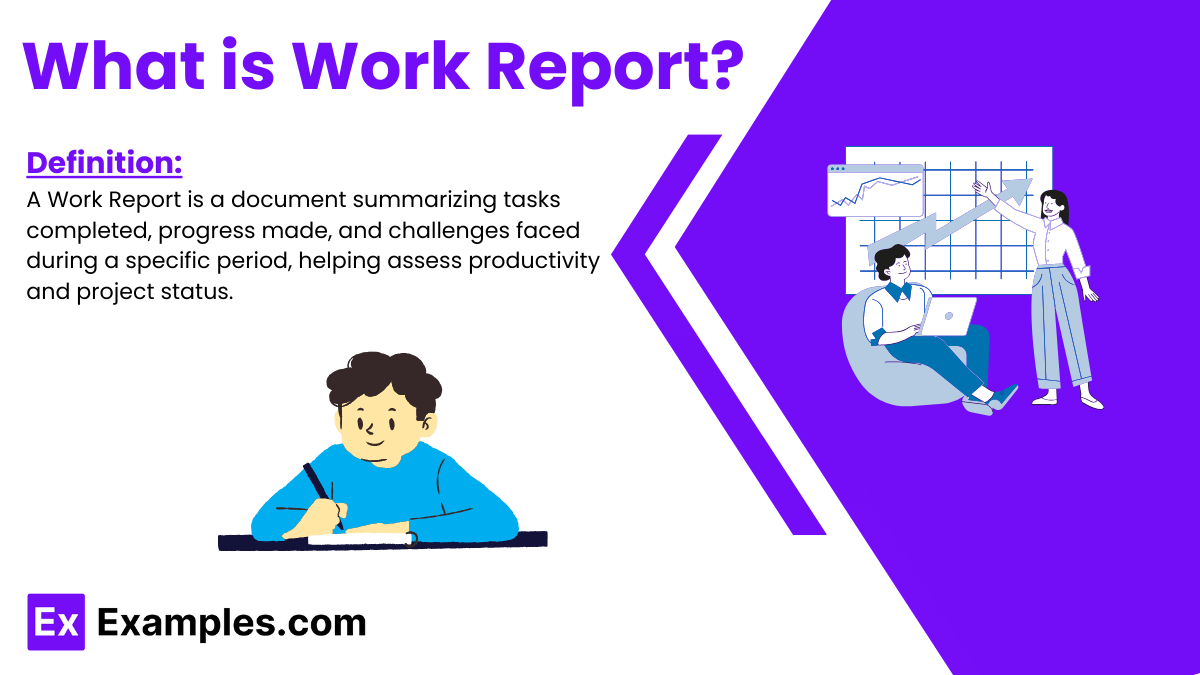
Work Report Examples Bundle
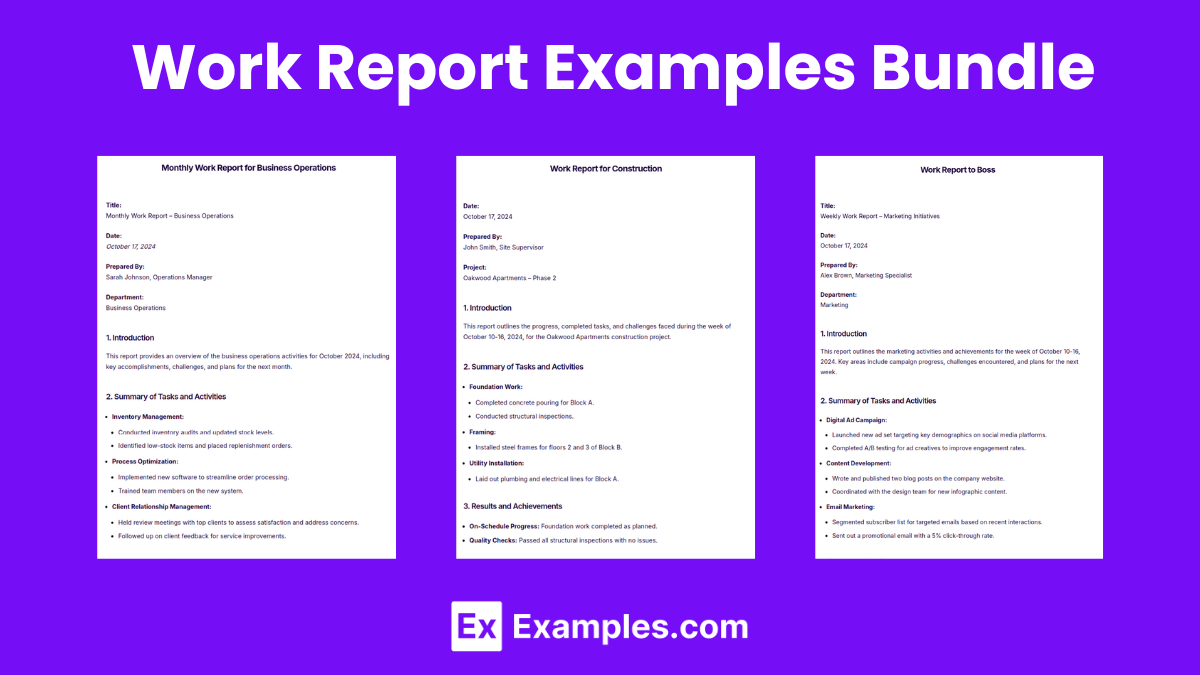
Download Work Report Examples Bundle
Work Report Format
Title Page
- Report Title (e.g., “Weekly Work Report”)
- Date of the Report
- Name and Position of the Author
- Department/Team
Introduction
- Purpose of the Report
- Reporting Period (e.g., dates covered)
- Brief Overview of Key Tasks
Summary of Tasks and Activities
- List of Completed Tasks
- Description of Each Task
- Time Spent on Each Activity
Results and Achievements
- Outcomes of Key Tasks
- Any Measurable Metrics or KPIs
- Major Accomplishments
Challenges and Solutions
- Issues or Obstacles Faced
- How These Challenges Were Addressed
- Any Pending Issues
Upcoming Tasks and Goals
- Tasks Planned for the Next Period
- Short-term Goals
- Expected Outcomes
Conclusion and Recommendations
- Summary of Overall Performance
- Any Suggestions for Improvement
- Requests for Additional Resources (if any)
Appendix (Optional)
- Additional Documents or Data
- Charts, Graphs, or Visuals Supporting the Report
Work Report Example
Date: October 15, 2024
Prepared by: [Your Name]
Position: [Your Position]
Department: [Department Name]Work Report for [Project/Task Name]
This report covers the progress of [Project/Task Name] from October 1 to October 15, 2024. Key activities include completing data analysis by October 5, delivering a presentation on findings on October 10, holding stakeholder meetings on October 7, and starting development on October 11 (50% complete). The first draft of [specific deliverable] is under review.
Challenges included delays in [specific task] due to [reason] and resource limitations impacting the speed of [task]. The data analysis is complete, and development is progressing as planned. Next steps involve finishing tasks by October 30, finalizing feedback, and scheduling a project review for November.
Prepared by: [Your Name]
Position: [Your Position]
Date: October 15, 2024
Work Report for Construction
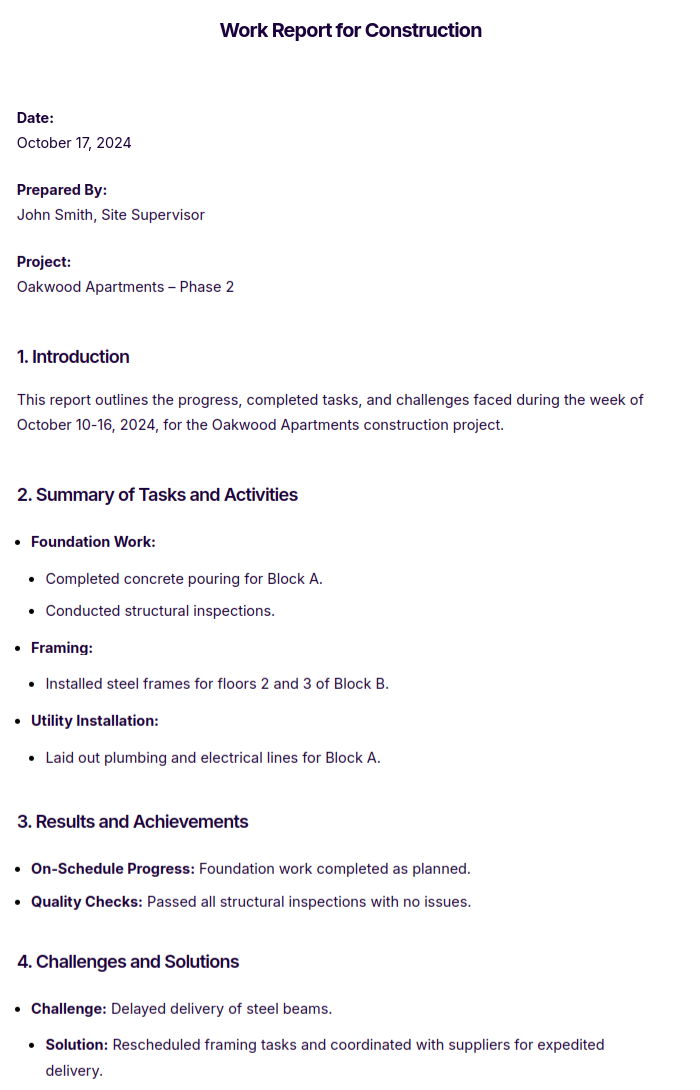
Monthly Work Report for Business Operations
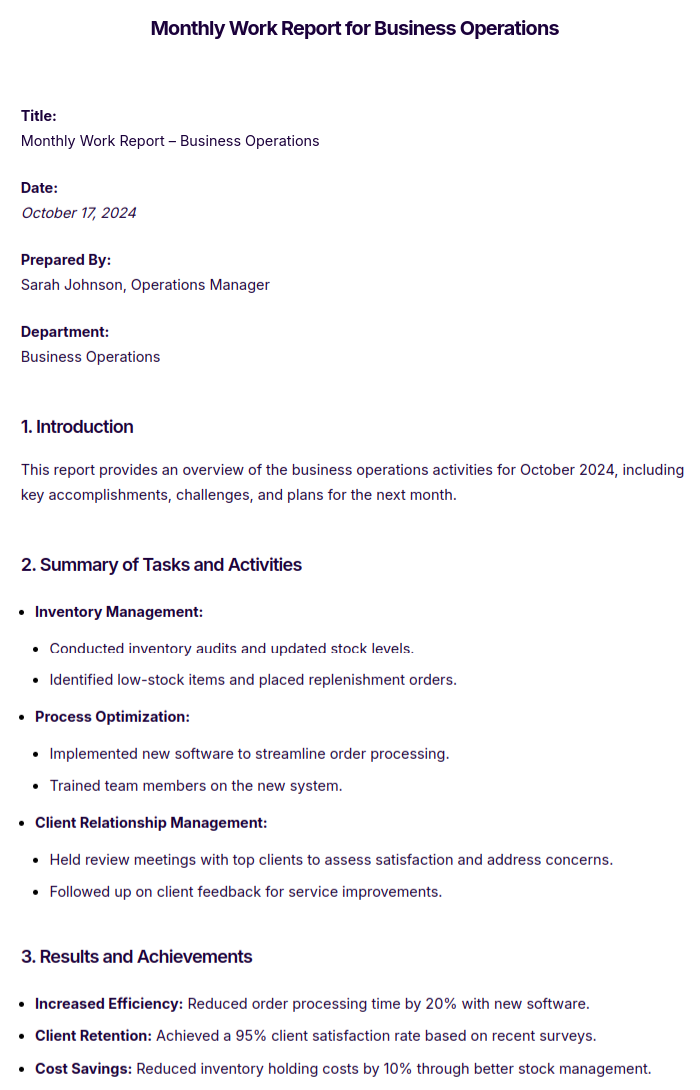
Work Report to Boss
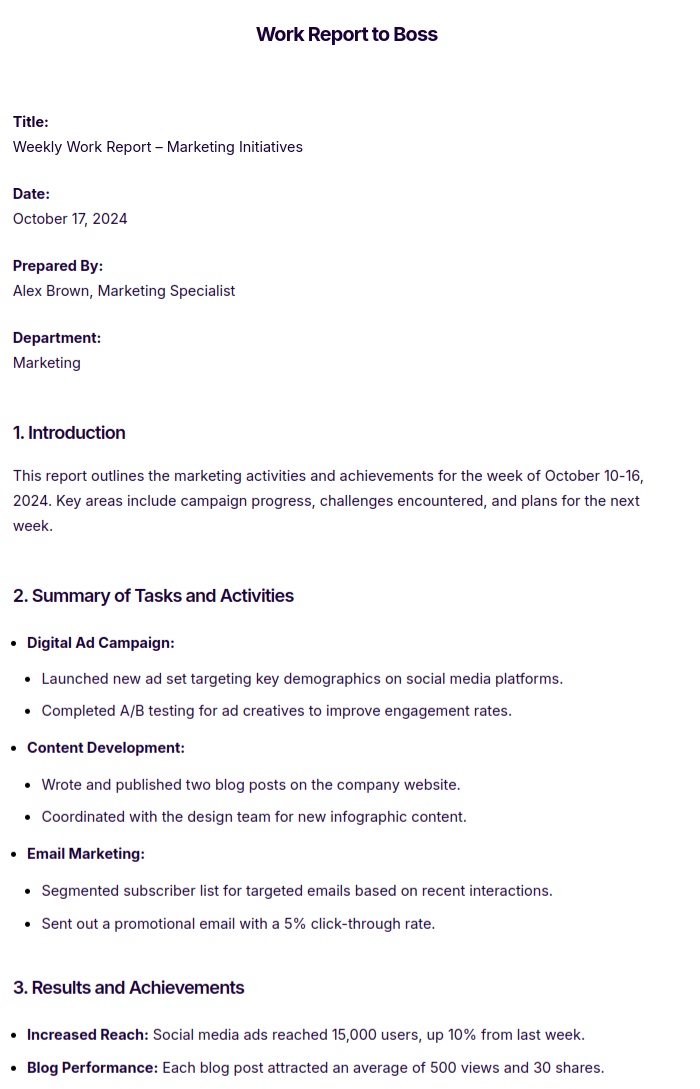
5+ Work Report Examples & Templates
1. Daily Work Report Template
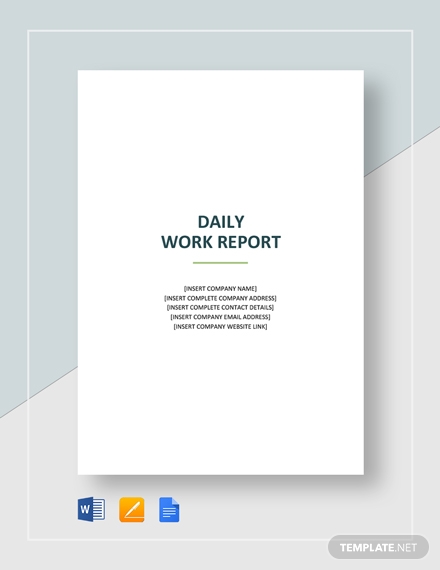
2. Free Weekly Work Report Sample
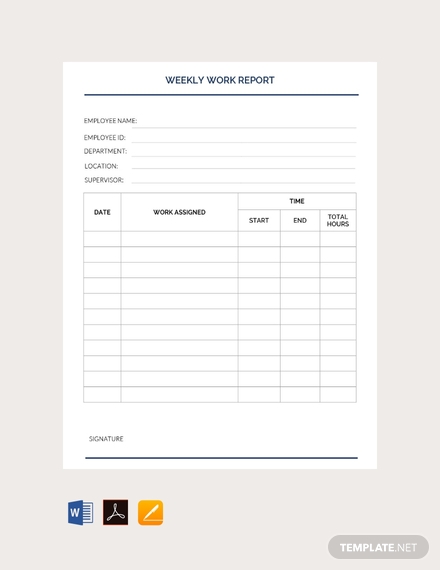
3. Scope of Work Report Template
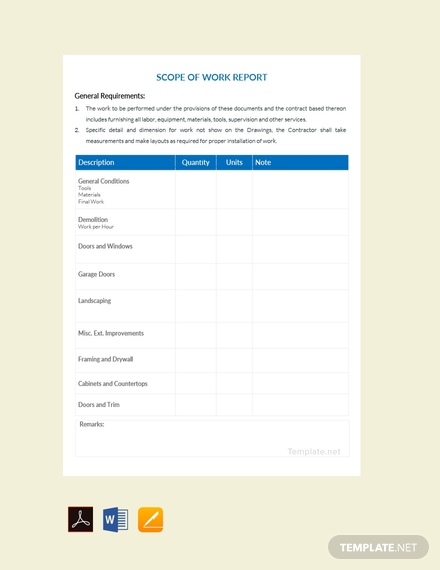
4. Free Work Handover Report Template
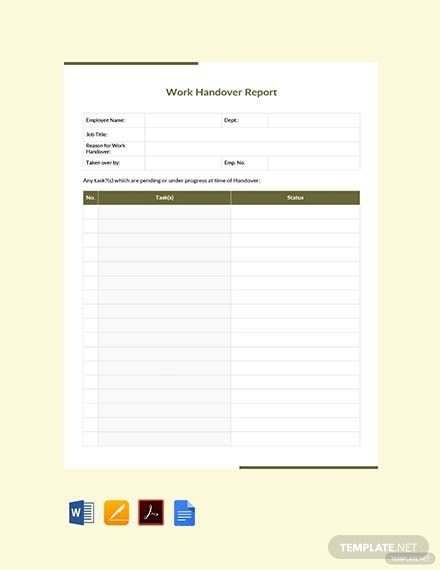
5. Free Weekly Work Progress Report
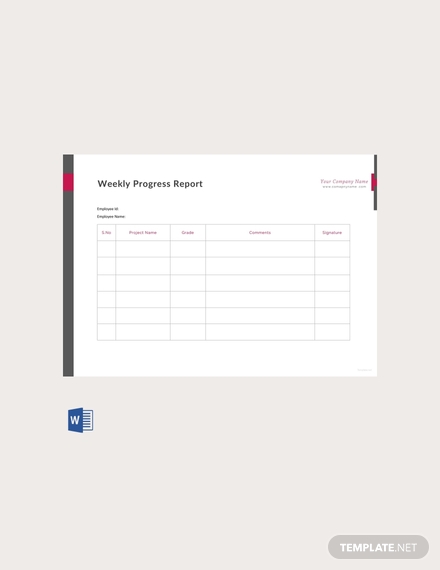
How to Write Work Report
Writing an effective work report involves clear communication, structure, and relevant details. Here’s a step-by-step guide to help you create a comprehensive work report:
Define the Purpose of the Report
Determine the objective of your report: Are you updating your supervisor on progress, reporting on a specific project, or summarizing your weekly tasks?
Identify the audience for your report, such as managers, team members, or stakeholders.Choose an Appropriate Format
Select a format that suits your report type (daily, weekly, monthly, or project-specific).
Use a standard structure with headings for each section (e.g., Introduction, Summary of Tasks, Challenges, Results).Gather Relevant Information
Collect details on tasks, activities, and time spent.
Include specific data, outcomes, or achievements.
Take note of any challenges, how they were addressed, and ongoing issues.Start with an Introduction
Briefly explain the purpose of the report and the period covered.
Provide a summary of key activities or projects.Detail the Tasks and Activities
List tasks completed, highlighting any major projects.
For each task, include a brief description and time spent.
Use bullet points or numbered lists for readability.Highlight Results and Achievements
Summarize measurable outcomes, such as completed milestones, KPIs, or metrics.
Describe how these results align with team or organizational goals.Discuss Challenges and Solutions
Identify any difficulties encountered, such as delays, resource shortages, or unexpected issues.
Explain how you addressed these challenges or propose solutions if they are unresolved.Outline Upcoming Tasks and Goals
List tasks planned for the next reporting period.
Set specific goals to provide a roadmap for what’s next.
Mention any deadlines or expected outcomes.Conclude with Recommendations
Summarize overall progress and provide insights into any improvements needed.
Include requests for resources or support if applicable.Review and Proofread
Ensure the report is clear, concise, and free of errors.
Double-check for accuracy in data, spelling, and grammar.
Benefits of a Work Report
- Accountability
A work report helps employees and teams stay accountable by recording progress, completed tasks, and any issues encountered. It provides clear evidence of work performed, making it easier for managers to assess productivity. - Improved Communication
Work reports foster better communication between team members and management. By summarizing key activities and results, reports ensure that everyone is on the same page regarding project status. - Performance Tracking
Reports allow managers to track performance over time. Trends in productivity, issues, and progress can be identified through regular reporting, enabling adjustments to be made early if needed. - Decision-Making
With detailed information about progress and any challenges, decision-makers can make informed choices about resource allocation, project continuation, or any necessary changes. - Record Keeping
Work reports serve as an official record of work done over time. These records can be valuable for future reference, audits, and accountability purposes. - Problem Identification
A report often highlights issues or delays that may not be visible in daily interactions. Managers can use this information to address problems before they escalate. - Motivation for Employees
Regular reporting can help employees reflect on their achievements and challenges, providing them with motivation and insights into how they can improve or adjust their approach.
Uses of a Work Report
- Performance Reviews
During performance reviews, work reports serve as a record of an employee’s accomplishments, contributions, and areas that may need improvement over a specific time period. - Progress Updates
Teams use work reports to update managers and stakeholders on project milestones, task completions, and upcoming activities. - Project Management
In project management, work reports keep teams organized and provide a clear timeline of what has been completed, what is currently in progress, and what still needs attention. - Employee Evaluation
Supervisors use reports to evaluate an employee’s performance. By reviewing submitted reports, managers can assess productivity, the quality of work, and adherence to deadlines. - Financial Reporting
Work reports are essential for tracking budgets and expenditures, especially in large projects. This helps ensure that projects remain within financial limits. - Client Communication
In industries that involve client services, work reports provide a means of keeping clients informed about the progress of their projects. This transparency builds trust and demonstrates professionalism. - Compliance and Audits
Work reports are often necessary for legal or compliance purposes. They provide a documented history of actions taken and ensure that all work complies with organizational standards or regulations.
Tips for Writing a Strong Work Report
- Be concise: Focus on key points and avoid unnecessary details.
- Use clear language: Write in a straightforward, professional tone.
- Include visual aids: Use tables, charts, or graphs if needed to illustrate data.
- Stick to facts: Report objectively and avoid personal opinions unless requested.
FAQs
What is the purpose of a work report?
A work report provides a summary of tasks, progress, and results for a specific period. It helps track productivity, communicates accomplishments, and identifies challenges or areas for improvement within a project or role.
How often should I submit a work report?
The frequency depends on organizational requirements. Common intervals are daily, weekly, or monthly. Specific projects may also require milestone reports at certain stages.
What should I include in a work report?
Essential sections include an introduction, a summary of tasks, results, challenges, and future plans. Depending on the report type, you may also add recommendations or detailed metrics.
How long should a work report be?
Keep it concise while covering all relevant information. For routine reports, one to two pages is typically sufficient. Detailed project reports may be longer but should still remain focused and organized.
Can I use a template for my work report?
Yes, templates can help maintain consistency and save time. Ensure the template meets your organization’s requirements, and tailor it to include specific details about your tasks and results.
5+ Work Report Examples to Download
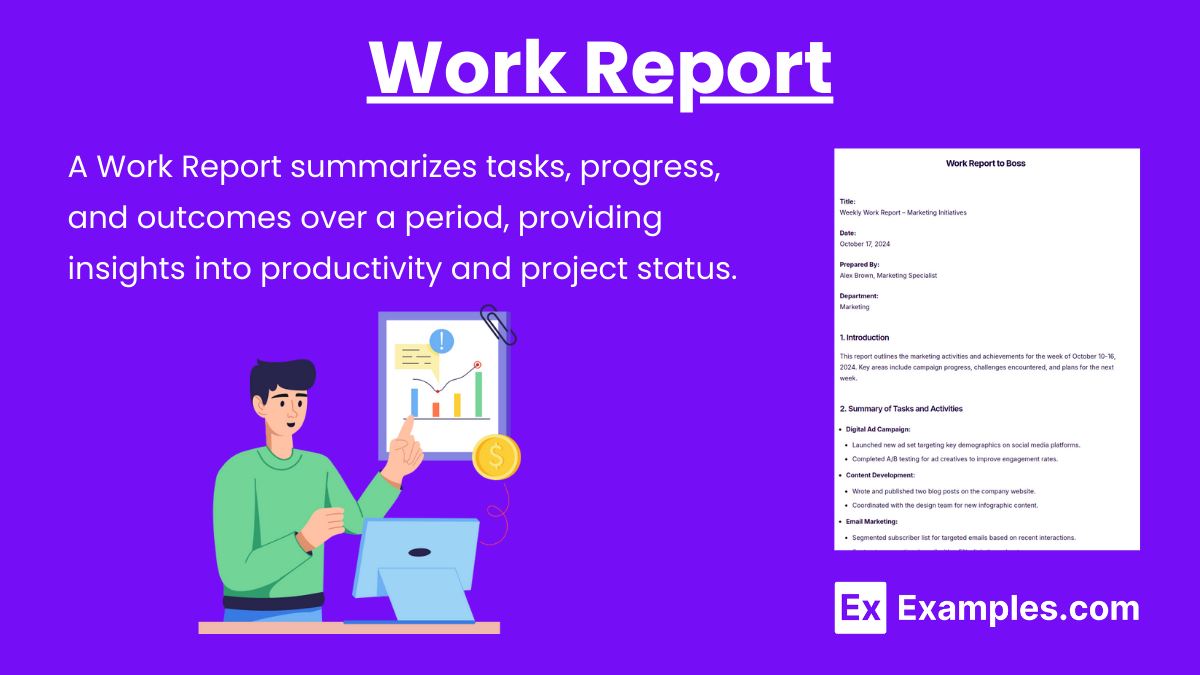
A Work Report is a document that summarizes an individual’s or team’s activities, progress, and outcomes over a specific period. It provides an overview of completed tasks, challenges faced, and achievements, helping managers assess productivity and make informed decisions about future projects.
What is Work Report?

A work report is a document summarizing an individual’s or team’s tasks, progress, and outcomes over a specific period. It provides insights into completed work, challenges faced, and upcoming goals. Work reports help organizations track productivity, evaluate performance, and ensure accountability within the workplace.
Work Report Examples Bundle

Download Work Report Examples Bundle
Work Report Format
Title Page
Report Title (e.g., “Weekly Work Report”)
Date of the Report
Name and Position of the Author
Department/Team
Introduction
Purpose of the Report
Reporting Period (e.g., dates covered)
Brief Overview of Key Tasks
Summary of Tasks and Activities
List of Completed Tasks
Description of Each Task
Time Spent on Each Activity
Results and Achievements
Outcomes of Key Tasks
Any Measurable Metrics or KPIs
Major Accomplishments
Challenges and Solutions
Issues or Obstacles Faced
How These Challenges Were Addressed
Any Pending Issues
Upcoming Tasks and Goals
Tasks Planned for the Next Period
Short-term Goals
Expected Outcomes
Conclusion and Recommendations
Summary of Overall Performance
Any Suggestions for Improvement
Requests for Additional Resources (if any)
Appendix (Optional)
Additional Documents or Data
Charts, Graphs, or Visuals Supporting the Report
Work Report Example
Date: October 15, 2024
Prepared by: [Your Name]
Position: [Your Position]
Department: [Department Name]Work Report for [Project/Task Name]
This report covers the progress of [Project/Task Name] from October 1 to October 15, 2024. Key activities include completing data analysis by October 5, delivering a presentation on findings on October 10, holding stakeholder meetings on October 7, and starting development on October 11 (50% complete). The first draft of [specific deliverable] is under review.
Challenges included delays in [specific task] due to [reason] and resource limitations impacting the speed of [task]. The data analysis is complete, and development is progressing as planned. Next steps involve finishing tasks by October 30, finalizing feedback, and scheduling a project review for November.
Prepared by: [Your Name]
Position: [Your Position]
Date: October 15, 2024
Work Report for Construction

Monthly Work Report for Business Operations

Work Report to Boss

5+ Work Report Examples & Templates
1. Daily Work Report Template

2. Free Weekly Work Report Sample

3. Scope of Work Report Template

4. Free Work Handover Report Template

5. Free Weekly Work Progress Report

How to Write Work Report
Writing an effective work report involves clear communication, structure, and relevant details. Here’s a step-by-step guide to help you create a comprehensive work report:
Define the Purpose of the Report
Determine the objective of your report: Are you updating your supervisor on progress, reporting on a specific project, or summarizing your weekly tasks?
Identify the audience for your report, such as managers, team members, or stakeholders.Choose an Appropriate Format
Select a format that suits your report type (daily, weekly, monthly, or project-specific).
Use a standard structure with headings for each section (e.g., Introduction, Summary of Tasks, Challenges, Results).Gather Relevant Information
Collect details on tasks, activities, and time spent.
Include specific data, outcomes, or achievements.
Take note of any challenges, how they were addressed, and ongoing issues.Start with an Introduction
Briefly explain the purpose of the report and the period covered.
Provide a summary of key activities or projects.Detail the Tasks and Activities
List tasks completed, highlighting any major projects.
For each task, include a brief description and time spent.
Use bullet points or numbered lists for readability.Highlight Results and Achievements
Summarize measurable outcomes, such as completed milestones, KPIs, or metrics.
Describe how these results align with team or organizational goals.Discuss Challenges and Solutions
Identify any difficulties encountered, such as delays, resource shortages, or unexpected issues.
Explain how you addressed these challenges or propose solutions if they are unresolved.Outline Upcoming Tasks and Goals
List tasks planned for the next reporting period.
Set specific goals to provide a roadmap for what’s next.
Mention any deadlines or expected outcomes.Conclude with Recommendations
Summarize overall progress and provide insights into any improvements needed.
Include requests for resources or support if applicable.Review and Proofread
Ensure the report is clear, concise, and free of errors.
Double-check for accuracy in data, spelling, and grammar.
Benefits of a Work Report
Accountability
A work report helps employees and teams stay accountable by recording progress, completed tasks, and any issues encountered. It provides clear evidence of work performed, making it easier for managers to assess productivity.Improved Communication
Work reports foster better communication between team members and management. By summarizing key activities and results, reports ensure that everyone is on the same page regarding project status.Performance Tracking
Reports allow managers to track performance over time. Trends in productivity, issues, and progress can be identified through regular reporting, enabling adjustments to be made early if needed.Decision-Making
With detailed information about progress and any challenges, decision-makers can make informed choices about resource allocation, project continuation, or any necessary changes.Record Keeping
Work reports serve as an official record of work done over time. These records can be valuable for future reference, audits, and accountability purposes.Problem Identification
A report often highlights issues or delays that may not be visible in daily interactions. Managers can use this information to address problems before they escalate.Motivation for Employees
Regular reporting can help employees reflect on their achievements and challenges, providing them with motivation and insights into how they can improve or adjust their approach.
Uses of a Work Report
Performance Reviews
During performance reviews, work reports serve as a record of an employee’s accomplishments, contributions, and areas that may need improvement over a specific time period.Progress Updates
Teams use work reports to update managers and stakeholders on project milestones, task completions, and upcoming activities.Project Management
In project management, work reports keep teams organized and provide a clear timeline of what has been completed, what is currently in progress, and what still needs attention.Employee Evaluation
Supervisors use reports to evaluate an employee’s performance. By reviewing submitted reports, managers can assess productivity, the quality of work, and adherence to deadlines.Financial Reporting
Work reports are essential for tracking budgets and expenditures, especially in large projects. This helps ensure that projects remain within financial limits.Client Communication
In industries that involve client services, work reports provide a means of keeping clients informed about the progress of their projects. This transparency builds trust and demonstrates professionalism.Compliance and Audits
Work reports are often necessary for legal or compliance purposes. They provide a documented history of actions taken and ensure that all work complies with organizational standards or regulations.
Tips for Writing a Strong Work Report
Be concise: Focus on key points and avoid unnecessary details.
Use clear language: Write in a straightforward, professional tone.
Include visual aids: Use tables, charts, or graphs if needed to illustrate data.
Stick to facts: Report objectively and avoid personal opinions unless requested.
FAQs
What is the purpose of a work report?
A work report provides a summary of tasks, progress, and results for a specific period. It helps track productivity, communicates accomplishments, and identifies challenges or areas for improvement within a project or role.
How often should I submit a work report?
The frequency depends on organizational requirements. Common intervals are daily, weekly, or monthly. Specific projects may also require milestone reports at certain stages.
What should I include in a work report?
Essential sections include an introduction, a summary of tasks, results, challenges, and future plans. Depending on the report type, you may also add recommendations or detailed metrics.
How long should a work report be?
Keep it concise while covering all relevant information. For routine reports, one to two pages is typically sufficient. Detailed project reports may be longer but should still remain focused and organized.
Can I use a template for my work report?
Yes, templates can help maintain consistency and save time. Ensure the template meets your organization’s requirements, and tailor it to include specific details about your tasks and results.

